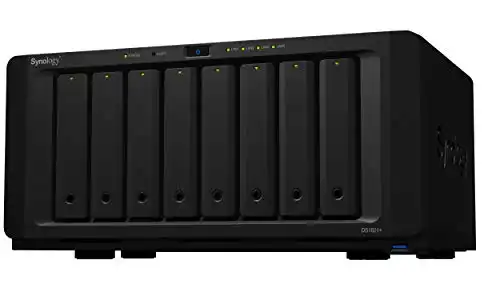Are you looking for the best file system for your Synology device?
In this article, we'll compare Btrfs Vs Ext4 to help you make an informed decision. Discover the performance, data integrity, and snapshot features of each file system. Explore the flexibility, scalability, and user-friendly interface they offer.
With this information, you'll be able to choose the file system that meets your innovation-driven needs.
Table of Contents
ToggleTable of Contents
Performance Comparison
When it comes to performance, how do Btrfs and Ext4 stack up on Synology?
Well, if you're someone who craves innovation, you'll be thrilled to know that both file systems offer excellent performance capabilities.
Btrfs, with its advanced features like snapshots and data checksums, provides a cutting-edge solution for data storage. It allows for faster data access and improved data integrity, ensuring that your files are safe and accessible at all times.
On the other hand, Ext4, with its simplicity and reliability, delivers solid performance that's ideal for everyday tasks. Whether you're transferring large files or running resource-intensive applications, both Btrfs and Ext4 will meet your performance needs on Synology.
Data Integrity and Reliability
If you want to ensure data integrity and reliability on your Synology device, both Btrfs and Ext4 have got you covered. These file systems offer advanced features that prioritize the protection of your data.
Btrfs, also known as the ‘butter filesystem,' provides built-in data checksumming, which verifies the integrity of your files and detects any corruption. This ensures that your data remains intact, even in the event of hardware failures or power outages. Additionally, Btrfs supports snapshots, allowing you to create point-in-time copies of your data, providing an extra layer of protection against accidental deletions or modifications.
On the other hand, Ext4, the fourth extended filesystem, also offers reliable data handling. It uses journaling, which keeps track of changes to the filesystem, ensuring that data is written accurately and consistently. This reduces the risk of data corruption or loss during unexpected system crashes. Ext4 also supports data checksumming as an optional feature, allowing you to enable it for added data integrity.
Whether you choose Btrfs or Ext4, you can be confident that your Synology device will provide a robust and reliable storage solution for your important data.
Snapshot and Data Protection Features
For enhanced data protection and peace of mind, both Btrfs and Ext4 offer snapshot functionality and other important data protection features.
With Btrfs, you can easily create point-in-time snapshots of your data, allowing you to revert back to a previous state if needed. This can be especially useful when testing new software or making critical changes to your system.
Ext4 also provides snapshot capability, allowing you to capture the current state of your data for future reference.
In addition to snapshots, both file systems offer data checksumming, which ensures the integrity of your data by detecting and correcting any errors that may occur.
These features not only provide an extra layer of protection for your files but also give you the confidence to innovate and explore new possibilities without the fear of data loss.
Flexibility and Scalability: Btrfs Vs Ext4 Synology
You have the option to choose between Btrfs and Ext4 for their flexibility and scalability. Btrfs, being a next-generation filesystem, offers innovative features that cater to your needs for flexibility and scalability.
With Btrfs, you can easily resize your file system on-the-fly, allowing you to adapt to changing storage requirements without any downtime. Its support for multiple device setups, such as RAID arrays and storage pools, ensures that you can scale your storage capacity effortlessly.
Btrfs also provides advanced data protection features like data checksums and automatic data recovery, ensuring the integrity and reliability of your data.
On the other hand, Ext4, while a mature and stable filesystem, may have limitations when it comes to flexibility and scalability, making Btrfs a more innovative choice for those seeking cutting-edge capabilities.
User-Friendly Interface and Management Tools
When it comes to user-friendly interface and management tools, Btrfs offers a more intuitive and streamlined experience compared to Ext4.
With Btrfs, you can easily navigate and manage your data with its user-friendly interface that prioritizes simplicity and efficiency. The management tools provided by Btrfs are designed to make your life easier, allowing you to effortlessly organize and access your files.
You can easily create snapshots, clone volumes, and manage storage resources with just a few clicks. Btrfs also offers advanced features such as data deduplication and RAID support, further enhancing your storage capabilities.
Whether you're a casual user or a professional, Btrfs provides an innovative and user-friendly solution for managing your data effectively and efficiently.



